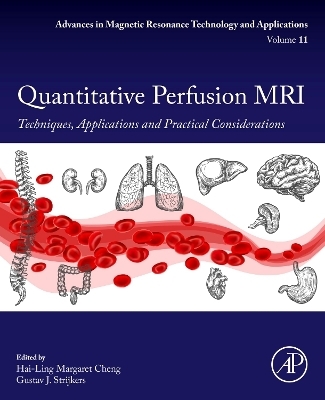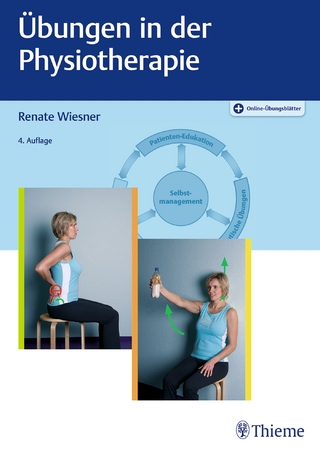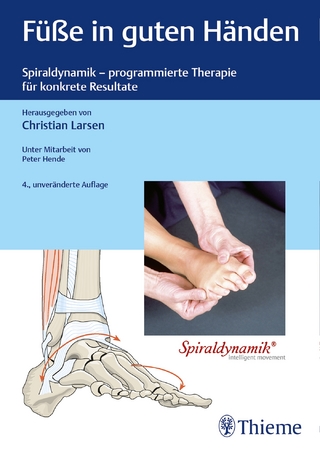
Quantitative Perfusion MRI
Academic Press Inc (Verlag)
978-0-323-95209-5 (ISBN)
This complete reference on quantitative perfusion MRI is highly suitable for both early and experienced researchers, graduate students and clinicians wishing to understand how quantitative perfusion MRI can apply to their application area of interest.
Prof. H.-L.M. Cheng is Full Professor at the University of Toronto in the Institute of Biomedical Engineering and the Edward S. Rogers Sr. Department of Electrical & Computer Engineering. She earned her B.Sc. and M.Sc. in Electrical & Computer Engineering at the University of Calgary and worked in industry on real-time synthetic aperture radar surveillance before completing her Ph.D. in Medical Biophysics at the University of Toronto on her thesis “MRI monitoring of focused ultrasound thermal ablation. Her research in quantitative MRI methodologies expanded over the next decade at the Hospital for Sick Children, where she developed protocols for clinical research in parallel to forging the first MRI applications in tissue engineering and designing novel MRI contrast agents. In 2014, she joined the Faculty of Engineering at the University of Toronto and the Ted Rogers Centre for Heart Research. Her current research is focused on new contrast agent design and rapid, quantitative MRI methodologies for physiological, cellular, and molecular imaging, with an emphasis on early detection of heart failure and MRI-guided tissue regenerative therapies. Prof. dr. G.J. (Gustav) Strijkers is Full Professor (Preclinical and Translational MRI) at the University of Amsterdam (UvA) and Adjunct Professor at Mount Sinai, New York. He earned his PhD at the Eindhoven University of Technology (TUE) with the title Magnetic Nanostructures and was a post-doctoral fellow at John Hopkins University, Baltimore. He served as assistant professor and associate professor at TUE and at UvA. He was a reviewer for several international journals and funding agencies and a member of scientific associations. Currently, his group uses a translational approach for the development of novel MRI sequences for improved diagnostics of disease and therapy monitoring. Novel preclinical protocols for high field MRI are initially developed in mouse and rat models. The most promising protocols are then translated for human clinical MRI. He established research programs on the development of comprehensive accelerated MRI protocols which provide valuable readouts in preclinical studies on the development and treatment of cardiovascular diseases, the application of traditional and novel nano particulate contrast agents, the improvement of imaging speed in MRI by the use of parallel imaging and novel mathematical imaging acceleration techniques, the use of multi-contrast MRI for the comprehensive and real-time evaluation of cancer therapy, and the development of diffusion-MRI to assess heart and skeletal muscle architecture and structural integrity in health and disease.
Preface
SECTION 1: BASIC PRINCIPLES 1. Basic principles of imaging blood flow 2. Dynamic contrast-enhanced MRI 3. Dynamic susceptibility contrast MRI 4. Arterial spin labeling MRI 5. Vasoreactivity MRI
SECTION 2: TECHNICAL CONSIDERATIONS 6. MR contrast agents for perfusion imaging 7. Protocol requirements for quantitation accuracy 8. Arterial input function: a friend or foe? 9. Motion compensation strategies 10. The impact of water exchange 11. Acceleration methods for perfusion imaging 12. Artificial Intelligence: the next frontier of perfusion imaging?
SECTION 3: APPLICATIONS 13. Perfusion MRI in the brain and CNS 14. Perfusion MRI in the heart: arterial spin labeling 15. Perfusion MRI in the heart: first-pass perfusion 16. Perfusion MRI in the lungs 17. Perfusion MRI in the liver 18. Kidney Perfusion using ASL 19. Kidney Perfusion using DCE 20. Perfusion MRI in skeletal muscle
| Erscheinungsdatum | 26.08.2023 |
|---|---|
| Reihe/Serie | Advances in Magnetic Resonance Technology and Applications |
| Verlagsort | Oxford |
| Sprache | englisch |
| Maße | 191 x 235 mm |
| Gewicht | 1160 g |
| Themenwelt | Medizin / Pharmazie ► Physiotherapie / Ergotherapie ► Orthopädie |
| Technik ► Medizintechnik | |
| Technik ► Umwelttechnik / Biotechnologie | |
| ISBN-10 | 0-323-95209-7 / 0323952097 |
| ISBN-13 | 978-0-323-95209-5 / 9780323952095 |
| Zustand | Neuware |
| Informationen gemäß Produktsicherheitsverordnung (GPSR) | |
| Haben Sie eine Frage zum Produkt? |
aus dem Bereich


